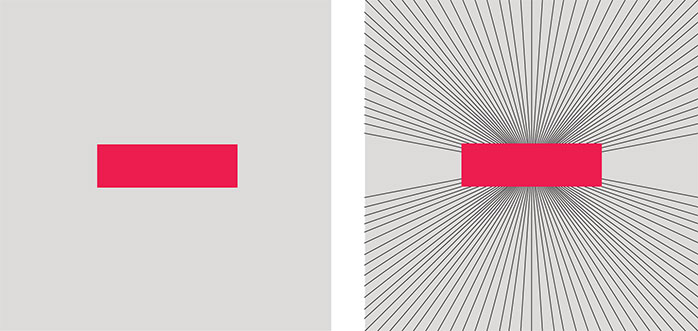The German scientist Ewald Hering first observed this geometrical-optical illusion in 1861, which seems like two parallel straight lines bending outward. Based on the scientific basis of his times, Hering explained the phenomenon as the result of our minds exaggerating the angle formed at the spots where the red and radiating lines cross. In actuality, this illusion, like many others, has various explanations.

Figure 4.6.a
Source: Nidhin Joseph
For example, some data suggest that after the mind has recognized particular traits in a stimulus, it goes one step further and imagines those traits to exist more substantially than they actually do. This hypothesis contends that when two patterns are observed simultaneously, the weaker pattern's perception is warped to preserve an exaggerated view of the stronger one. Hering's figure offers a stronger pattern and is perceived as having more spread than it actually does; the mind must distort the parallel lines to preserve this perception.
Additionally, according to researcher Mark Changizi, it has to do with people's tendency to anticipate the near future visually (Changizi et al., 2008). Changizi believes that the human visual system has evolved to account for the neurological delay by creating representations of what will happen one-tenth of a second from the moment that light reaches the retina to the time the brain receives that light. Other explanations could account for the edge-based interactions of the vanishing point. In the pictures below, various elements of Hering's illusion have been explored by varying some elements. Hering's illusion will help the visual designers understand how perspectives and lines interact with each other.
Here are some more explorations of the Hering’s illusion.

Figure 4.6.b
Source: Nidhin Joseph

Figure 4.6.c
Source: Nidhin Joseph
For further explanation about the explorations, please look at the link below.
• Herings Illusion......

